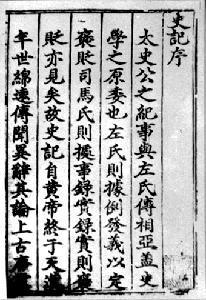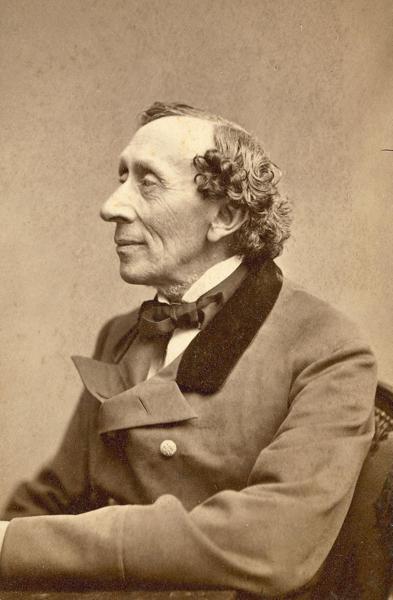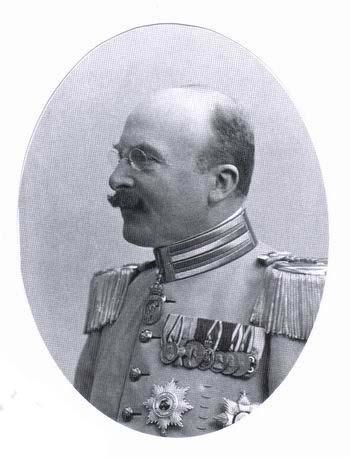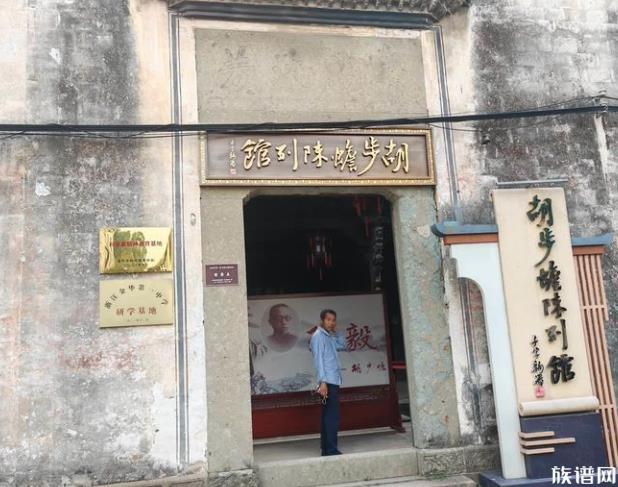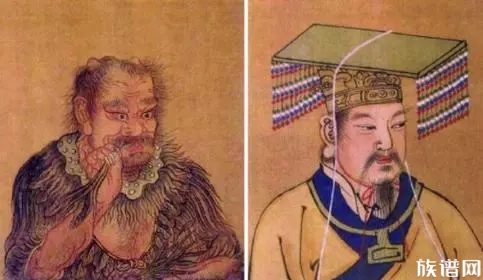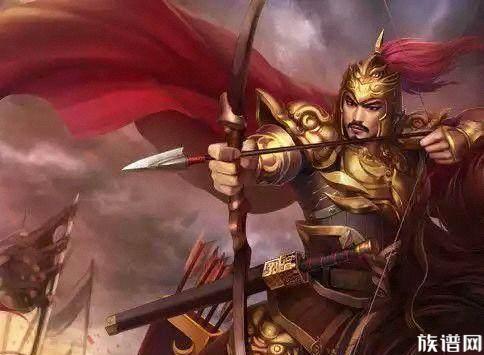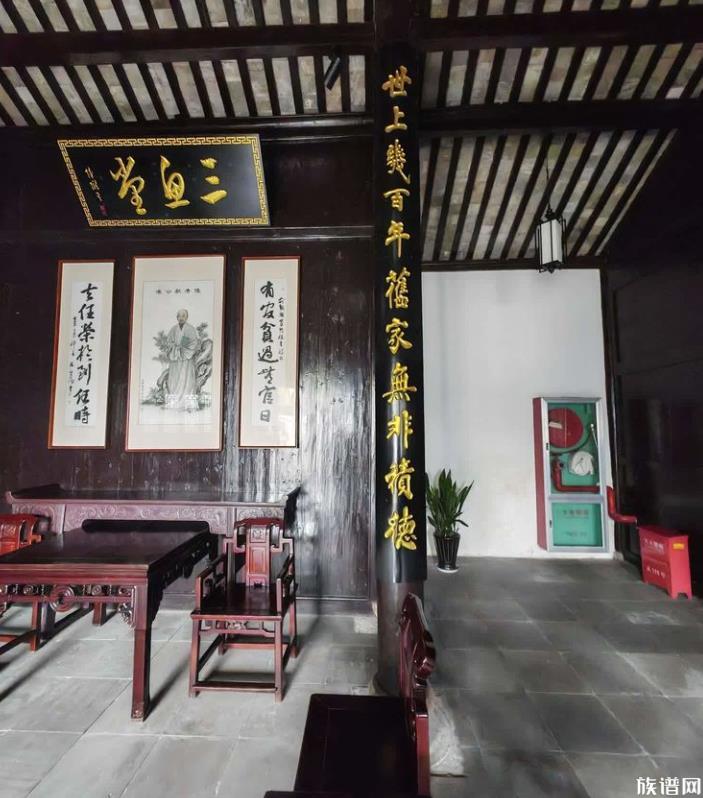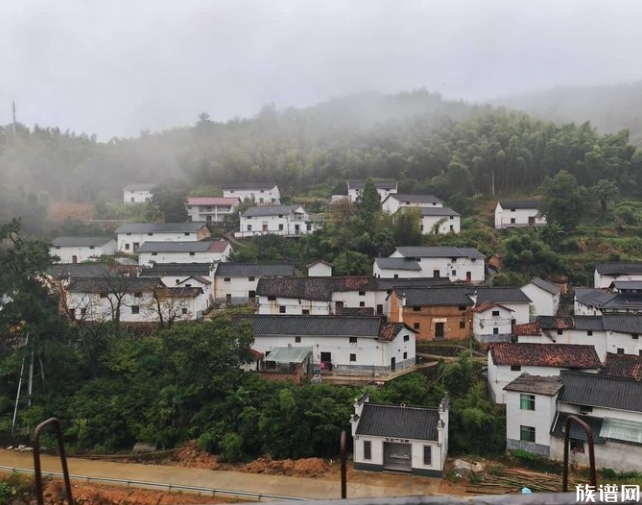



马尔科姆三世
历史背景
1034年,马尔科姆的曾外祖父马尔科姆二世(肯尼思之子马尔科姆,Máel Coluim mac Cináeda)驾崩,马尔科姆的父亲邓肯一世(克里南之子邓肯,Donnchad mac Crínáin)作为马尔科姆二世的外孙继位为苏格兰国王。据后来为威廉·莎士比亚创作戏剧《麦克白》带来灵感的编年史作者富尔顿的约翰所述,马尔科姆的母亲是诺森布里亚伯爵希华的一个侄女, 但一份早期的国王列表中给她取了盖尔语名苏珊。 其他的来源资料称,无论是女儿或是侄女都年龄太小而不适合结婚,因此,邓肯的母亲是希华自己的妹妹西比尔更可靠些,西比尔的名字转化成盖尔语可能为苏珊。
邓肯统治很不得人心,1040年8月15日邓肯在与麦克白塔德(芬莱克之子,Mac Bethad mac Findlaích) 交战时被后者杀死。尽管莎士比亚的戏剧《麦克白》 将马尔科姆描述成了一个成年男子并把邓肯描述成了一位老者,但到邓肯被杀害时,马尔科姆还很幼小, 马尔科姆和弟弟唐纳德·班(Domnall Bán)都还只是孩子。 1045年,马尔科姆的家人试图推翻麦克白塔德,但马尔科姆的祖父邓凯尔德的克里南在尝试中被打死。
邓肯死后不久,他两个年幼的儿子被送往安全的地方 —到底被送到哪里是争论的议题。根据一种版本所述,马尔科姆(年龄大约9岁)被送往英格兰, 他的弟弟唐纳德·班被送往小岛。 基于富尔顿的约翰所述,人们认为马尔科姆在麦克白塔德长达十七年的统治中,他在英格兰王国艾德沃德三世的宫廷里度过。
根据另一个版本,马尔科姆的母亲带着两个儿子去奥克尼伯爵索芬·西古德松的宫廷流亡,也许是邓肯的婚姻,使得奥克尼伯爵与麦克白塔德为敌。
1054年,英国军队在诺森布里亚伯爵希华的领导下入侵苏格兰。以将"坎布里亚国王之子马尔科姆"推上王位为目的。该马尔科姆历来被认为就是后来的马尔科姆三世。 这种解释源于十四世纪富尔顿的约翰的苏格兰编年史,以及早期来源资料如马姆斯伯里的威廉的记述。 后者报道称麦克白塔德同希华作战时被杀死,但事实上希华死在麦克白早死了两年。 A.A.M.邓肯2002年在著作中,用《盎格鲁-撒克逊编年史》作为其辩论的事实依据,认为后世历史学家竟天真的把"马尔科姆"和后来成为苏格兰国王的马尔科姆三世当成一个人。 邓肯的说法随后得到了数个当代历史学专家的赞同,例如理查德·奥拉姆、道韦特·布罗恩和亚历克斯·伍尔夫等。 也有人认为,那个马尔科姆是不列颠斯特拉思克莱德国王欧文二世之子。 那个马尔科姆的母亲可能是苏格兰国王马尔科姆二世的女儿。
1057年的各种编年史报告称在1057年8月15日,麦克白塔德在阿伯丁郡隆发南死于马尔科姆之手。 麦克白塔德的继承人是他的继子卢拉赫,他大约在1057年9月8日在斯昆加冕为王。 。1058年3月23日,“众叛亲离”的卢拉赫在亨特利附近被马尔科姆杀死。在此之后,马尔科姆成为国王。据富尔顿的约翰记述,马尔科姆可能在1058年4月25日加冕。
一些未翻译的非现代汉语已进行隐藏,欢迎参与翻译。 马尔科姆和因加 Late medieval depiction of Máel Coluim III with MacDuib ("MacDuff"), from an MS (Corpus Christi MS 171) of Walter Bower"s Scotichronicon . If Orderic Vitalis is to be relied upon, one of Malcolm"s earliest actions as King may have been to travel south to the court of Edward the Confessor in 1059 to arrange a marriage with Edward"s kinswoman Margaret, who had arrived in England two years before fromHungary. If he did visit the English court, he was the first reigning King of Scots to do so in more than eighty years. If a marriage agreement was made in 1059, it was not kept, and this may explain the Scots invasion of Northumbria in 1061 whenLindisfarnewas plundered. Equally, Malcolm"s raids in Northumbria may have been related to the disputed "Kingdom of the Cumbrians", reestablished by Earl Siward in 1054, which was under Malcolm"s control by 1070. The Orkneyinga saga reports that Malcolm married the widow of Thorfinn Sigurdsson, Ingibiorg, a daughter of Finn Arnesson. Although Ingibiorg is generally assumed to have died shortly before 1070, it is possible that she died much earlier, around 1058. The Orkneyinga Saga records that Malcolm and Ingibiorg had a son, Duncan II (Donnchad mac Maíl Coluim), who was later king. Some Medieval commentators, following William of Malmesbury, claimed that Duncan was illegitimate, but this claim is propaganda reflecting the need of Malcolm"s descendants by Margaret to undermine the claims of Duncan"s descendants, the Meic Uilleim. Malcolm"s son Domnall, whose death is reported in 1085, is not mentioned by the author of the Orkneyinga Saga . He is assumed to have been born to Ingibiorg. Malcolm"s marriage to Ingibiorg secured him peace in the north and west. The Heimskringla tells that her father Finn had been an adviser to Harald Hardraade and, after falling out with Harald, was then made an Earl by Sweyn Estridsson, King of Denmark, which may have been another recommendation for the match. Malcolm enjoyed a peaceful relationship with the Earldom of Orkney, ruled jointly by his stepsons, Paul and Erlend Thorfinnsson. The Orkneyinga Saga reports strife with Norway but this is probably misplaced as it associates this with Magnus Barefoot, who became king of Norway only in 1093, the year of Malcolm"s death. 马尔科姆和玛格丽特 此为在一本16世纪纹章图书中有关马尔科姆和玛格丽特的插图。请注意在此二位身上的盾形纹章。在马尔科姆身上的是一只苏格兰之狮,虽然将狮子与苏格兰联系起来是一世纪后,从其曾孙狮子王威廉时代才开始的。在玛格丽特身上的是其伯公忏悔者爱德华的纹章,但这纹章被证实是在中世纪后期伪造出来的。 Although he had given sanctuary to Tostig Godwinson when the Northumbrians drove him out, Malcolm was not directly involved in the ill-fated invasion of England by Harald Hardraade and Tostig in 1066, which ended in defeat and death at the battle of Stamford Bridge. In 1068, he granted asylum to a group of English exiles fleeing from William of Normandy, among them Agatha, widow of Edward the Confessor"s nephew Edward the Exile, and her children: Edgar Ætheling and his sisters Margaret and Cristina. They were accompanied by Gospatric, Earl of Northumbria. The exiles were disappointed, however, if they had expected immediate assistance from the Scots. In 1069 the exiles returned to England, to join a spreading revolt in the north. Even though Gospatric and Siward"s son Waltheof submitted by the end of the year, the arrival of a Danish army under Sweyn Estridsson seemed to ensure that William"s position remained weak. Malcolm decided on war, and took his army south into Cumbria and across the Pennines, wasting Teesdale and Cleveland then marching north, loaded with loot, to Wearmouth. There Malcolm met Edgar and his family, who were invited to return with him, but did not. As Sweyn had by now been bought off with a large Danegeld, Malcolm took his army home. In reprisal, William sent Gospatric to raid Scotland through Cumbria. In return, the Scots fleet raided the Northumbrian coast where Gospatric"s possessions were concentrated. Late in the year, perhaps shipwrecked on their way to a European exile, Edgar and his family again arrived in Scotland, this time to remain. By the end of 1070, Malcolm had married Edgar"s sister Margaret of Wessex, the future Saint Margaret of Scotland. The naming of their children represented a break with the traditional Scots Regal names such as Malcolm, Cináed and Áed. The point of naming Margaret"s sons, Edward after her father Edward the Exile, Edmund for her grandfather Edmund Ironside, Ethelred for her great-grandfather Ethelred the Unready and Edgar for her great-great-grandfather Edgar and her brother, briefly the elected king, Edgar Ætheling, was unlikely to be missed in England, where William of Normandy"s grasp on power was far from secure. Whether the adoption of the classical Alexander for the future Alexander I of Scotland (either for Pope Alexander II or for Alexander the Great) and the biblical David for the future David I of Scotland represented a recognition that William of Normandy would not be easily removed, or was due to the repetition of Anglo-Saxon Royal name—another Edmund had preceded Edgar—is not known. Margaret also gave Malcolm two daughters, Edith, who married Henry I of England, and Mary, who married Eustace III of Boulogne. In 1072, with the Harrying of the North completed and his position again secure, William of Normandy came north with an army and a fleet. Malcolm met William at Abernethy and, in the words of the Anglo-Saxon Chronicle "became his man" and handed over his eldest son Duncan as a hostage and arranged peace between William and Edgar. Accepting the overlordship of the king of the English was no novelty, as previous kings had done so without result. The same was true of Malcolm; his agreement with the English king was followed by further raids into Northumbria, which led to further trouble in the earldom and the killing of Bishop William Walcher at Gateshead. In 1080, William sent his son Robert Curthose north with an army while his brother Odo punished the Northumbrians. Malcolm again made peace, and this time kept it for over a decade. Malcolm faced little recorded internal opposition, with the exception of Lulach"s son Máel Snechtai. In an unusual entry, for the Anglo-Saxon Chronicle contains little on Scotland, it says that in 1078: Malcholom [Máel Coluim] seized the mother of Mælslæhtan [Máel Snechtai] ... and all his treasures, and his cattle; and he himself escaped with difficulty. Whatever provoked this strife, Máel Snechtai survived until 1085.
马尔科姆和威廉·鲁弗斯

英格兰国王(1087年–1100年在位)“红毛”威廉·鲁弗斯
威廉·鲁弗斯在他父亲去世后不久成为英格兰国王,马尔科姆没有干预罗贝尔的叛乱。在1091年,威廉·鲁弗斯 没收爱德加在英格兰的土地后爱德加逃离北上苏格兰。 5月,马尔科姆南下,并没有掠夺袭击,但围攻罗贝尔在1080年建成的纽卡斯尔。这似乎是一个为了促进边境南部的特维德河 向蒂斯河推进。这对英格兰的威胁足以让一直和罗贝尔·柯索斯战斗的威廉·鲁弗斯返回诺曼底。在9月,威廉·鲁弗斯率军回师,马尔科姆撤回英国北部。这次不像在1072年马尔科姆准备攻打英格兰,但由于罗贝尔·柯索斯和埃德加的干扰,马尔科姆不得不称承认英格兰的地位。
在1092年,和平被打破。威廉·鲁弗斯想要得到坎布里亚郡的领土,于是准备率领农民去攻打。但是几乎不可能成功,马尔科姆牢牢地控制着坎布里亚,威廉·鲁弗斯以坎布里亚是他父亲征服者威廉的他应该顺理成章的得到。马尔科姆派使者来讨论这个问题,威廉·鲁弗斯同意会谈。马尔科姆南下格洛斯特,在威尔顿修道院 来看望他的女儿伊迪丝和嫂子克里斯蒂娜。马尔科姆在1093年8月24日来到了会谈的地点,威廉·鲁弗斯却拒绝谈判,坚决要得到坎布里亚。马尔科姆拒绝接受,并立即回到了苏格兰。
威廉鲁弗斯想要挑起战争, 但是,盎格鲁-撒克逊记载战争来临:
马尔科姆和他的继承人爱德华都参加了这场战争, 在这场战争在,诺森比亚的苏格兰人满目疮痍。
死亡
马尔科姆率军向北进攻之时,被诺森比亚伯爵 罗伯特·德·诺布雷击中,他的土地已经满目疮痍,1093年11月13日在阿尼克 附近被阿尔科·莫雷尔在巴姆伯格堡杀死。这次战争史称阿尼克之战. 马尔科姆之子爱德华在这场战争中也身受重伤不久就死了。 阿尔斯特编年史记载:
马尔科姆的尸体被送往泰恩茅丝修道院 安葬。他的儿子亚历山大统治时将他到北迁葬,可能葬在邓弗姆林修道院,也可能葬在 伊俄纳岛。
在1250年6月19日,教宗英诺森四世封马尔科姆第二任妻子玛格丽特为圣人。玛格丽特的遗体被挖出迁往邓弗姆林修道院安葬。马尔科姆和玛格丽特葬在一起。
子女
马尔科姆和因加有三个儿子:
长子邓肯二世,苏格兰国王
次子唐纳德,死于1094年
三子马尔科姆,死于1085年
马尔科姆和玛格丽特有六个儿子,两个女儿:
四子爱德华,1093年被杀害
五子爱德蒙
六子埃塞雷德,邓凯尔德修道院院长
七子埃德加王,苏格兰国王
八子亚历山大一世,苏格兰国王
长女苏格兰的伊迪丝,也叫玛蒂尔达,嫁英格兰国王亨利一世
次女苏格兰的玛丽,嫁布洛涅伯爵尤斯塔斯三世
九子大卫一世,苏格兰国王
一些未翻译的非现代汉语已进行隐藏,欢迎参与翻译。 小说中的描写 Malcolm appears in William Shakespeare’s Macbeth . He is the son of King Duncan and heir to the throne. He first appears in the second scene where he is talking to a sergeant, with Duncan. The sergeant tells them how the battle was won thanks to Macbeth. Then Ross comes and Duncan decides that Macbeth should take the title of Thane of Cawdor. Then he later appears in Act 1.4 talking about the execution of the former Thane of Cawdor. Macbeth then enters and they congratulate him on his victory. He later appears in Macbeth’s castle as a guest. When his father is killed he is suspected of the murder so he escapes to England. He later makes an appearance in Act 4.3, where he talks to Macduff about Macbeth and what to do. They both decide to start a war against him. In Act 5.4 he is seen in Dunsinane getting ready for war. He orders the troupes to hide behind branches and slowly advance towards the castle. In Act 5.8 he watches the battle against Macbeth and Macduff with Siward and Ross. When eventually Macbeth is killed, Malcolm takes over as king. The married life of Malcolm III and Margaret has been the subject of two historical novels: A Goodly Pearl (1905) by Mary H. Debenham, and Malcolm Canmore"s Pearl (1907) by Agnes Grant Hay. Both focus on court life inDunfermline, and the Margaret helping introduce Anglo-Saxon culture in Scotland. The latter novel covers events to 1093, ending with Malcolm"s death. Canmore appears in the third and fourth episodes of the four-part series "City of Stone" in Disney"s Gargoyles , as an antagonist of Macbeth. After witnessing his father Duncan"s death, the young Canmore swears revenge on both Macbeth and his gargoyle ally, Demona. After reaching adulthood, he overthrows Macbeth with English allies. Canmore is also the ancestor of the Hunters, a family of vigilantes who hunt Demona through the centuries. Canmore was voiced in the series by J.D. Daniels as a boy and Neil Dickson as an adult.
祖先
苏格兰的马尔科姆三世的先祖
参考文献
艾伦·奥尔·安徒生, Early Sources of Scottish History A.D 500–1286 , volume 1. Reprinted with corrections. Paul Watkins, Stamford, 1990. ISBN 1-871615-03-8
Anderson, Alan Orr, Scottish Annals from English Chroniclers. D. Nutt, London, 1908.
马乔里· 奥格尔维·安德森, Kings and Kingship in Early Scotland. Scottish Academic Press, Edinburgh, revised edition 1980. ISBN 0-7011-1604-8
Anon., Orkneyinga Saga: The History of the Earls of Orkney , tr. Hermann Pálsson and Paul Edwards. Penguin, London, 1978. ISBN 0-14-044383-5
Baker, Ernest Albert,A Guide to Historical Fiction, George Routledge and sons, 1914
Barrell, A.D.M. Medieval Scotland. Cambridge University Press, Cambridge, 2000. ISBN 0-521-58602-X
G. W. S. 巴罗, Kingship and Unity: Scotland, 1000–1306. Reprinted, Edinburgh University Press, Edinburgh, 1989. ISBN 0-7486-0104-X
Barrow, G.W.S., The Kingdom of the Scots. Edinburgh University Press, Edinburgh, 2003. ISBN 0-7486-1803-1
Broun, Dauvit, The Irish Identity of the Kingdom of the Scots in the Twelfth and Thirteenth Centuries. Boydell, Woodbridge, 1999. ISBN 0-85115-375-5
约翰·希尔·伯顿, The History of Scotland , New Edition, 8 vols, Edinburgh 1876
Clancy, Thomas Owen, "St. Margaret" in Michael Lynch (ed.), The Oxford Companion to Scottish History. Oxford University Press, Oxford, 2002. ISBN 0-19-211696-7
阿奇·邓肯, The Kingship of the Scots 842–1292: Succession and Independence. Edinburgh University Press, Edinburgh, 2002. ISBN 0-7486-1626-8
Dunlop, Eileen, Queen Margaret of Scotland. National Museums of Scotland, Edinburgh, 2005. ISBN 1-901663-92-2
Hammond, Matthew H., "Ethnicity and Writing of Medieval Scottish History", in The Scottish Historical Review , Vol. 85, April, 2006, pp. 1–27
富尔顿的约翰, Chronicle of the Scottish Nation , ed. William Forbes Skene, tr. Felix J.H. Skene, 2 vols. Reprinted, Llanerch Press, Lampeter, 1993. ISBN 1-897853-05-X
McDonald, R. Andrew, The Kingdom of the Isles: Scotland"s Western Seaboard, c. 1100–c.1336. Tuckwell Press, East Linton, 1997. ISBN 1-898410-85-2
McDonald, R. Andrew, Outlaws of Medieval Scotland: Challenges to the Canmore Kings, 1058–1266. Tuckwell Press, East Linton, 2003. ISBN 1-86232-236-8
Nield, Jonathan,A Guide to the Best Historical Novels and Tales, G. P. Putnam"s sons, 1925, ISBN 0-8337-2509-2
理查德·奥拉姆, David I: The King Who Made Scotland. Tempus, Stroud, 2004. ISBN 0-7524-2825-X
Reid, Norman, "Kings and Kingship: Canmore Dynasty" in Michael Lynch (ed.), op. cit.
Ritchie, R. L. Graeme, The Normans in Scotland , Edinburgh University Press, 1954
斯诺里·斯蒂德吕松, Heimskringla: History of the Kings of Norway , tr. Lee M. Hollander. Reprinted University of Texas Press, Austin, 1992. ISBN 0-292-73061-6
Young, James, ed., Historical References to the Scottish Family of Lauder , Glasgow, 1884
免责声明:以上内容版权归原作者所有,如有侵犯您的原创版权请告知,我们将尽快删除相关内容。感谢每一位辛勤著写的作者,感谢每一位的分享。

相关资料

- 有价值
- 一般般
- 没价值








24小时热门
推荐阅读
关于我们

APP下载






